#Olive trees
Explore tagged Tumblr posts
Text
Let's Go !

Palestinian poets coming up with cool Hollywood action one liners, tho.
#movies#free palestine#palestine#poets#politics#books#donald trump#Olives#Olive trees#Die hard#modal melayu#malaygirl#malay hijab#hot malay#malay sex#malaysia#melayu tudung#melayu lancap#melayu sedap#melayubogel#politikus#politi#politik#politikmalaysia
405 notes
·
View notes
Text

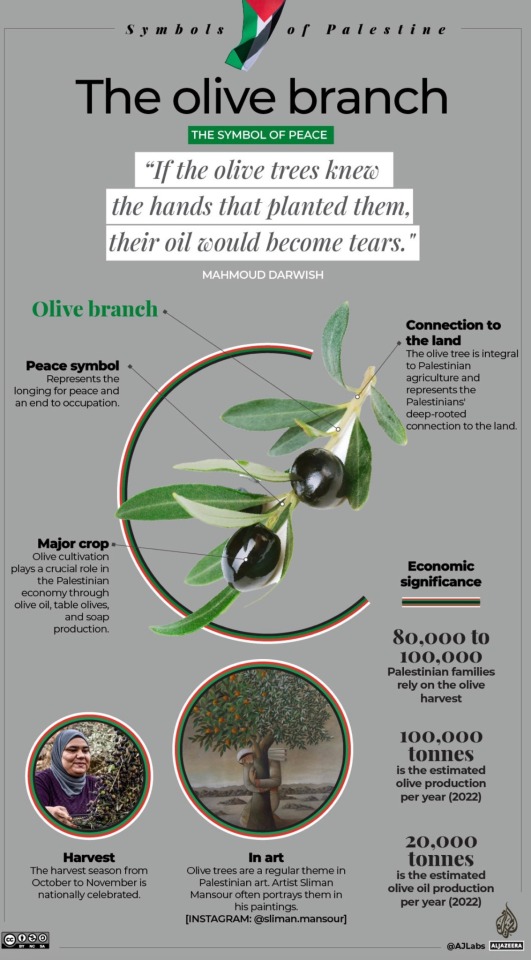

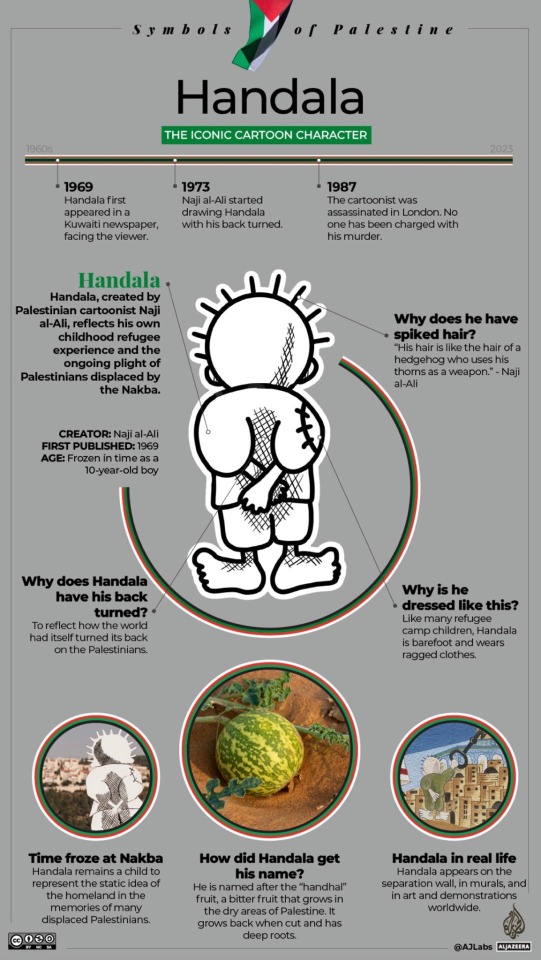

Original thread repost | Original thread | Original Article (Source of the posters)
Images only
The image descriptions were written by @/carstairsbur and Mohammed Haddad, Konstantinos Antonopoulos and Marium Ali.
#ChuchaYucca.text#palestine#strike for palestine#strike for gaza#ceasefire now#ceasefire#no business as usual#global strike#stop the genocide#global strike week#keffiyeh#olive trees#the key of return#the Palestinian key#handala#watermelon#the olive branch
11K notes
·
View notes
Text
At times, the original flora [of Palestine] manages to return in surprising ways. Pine trees were planted not only over bulldozed houses, but also over fields and olive groves. In the new development town of Migdal Ha-Emek, for example, the JNF did its utmost to try and cover the ruins of the Palestinian village of Mujaydil, at the town’s eastern entrance, with rows of pine trees, not a proper forest in this case but just a small wood. Such ‘green lungs’ can be found in many of Israel’s development towns that cover destroyed Palestinian villages (Tirat Hacarmel over Tirat Haifa, Qiryat Shemona over Khalsa, Ashkelon over Majdal, etc.). But this particular species failed to adapt to the local soil and, despite repeated treatment, disease kept afflicting the trees. Later visits by relatives of some of Mujaydial’s original villagers revealed that some of the pine trees had literally split in two and how, in the middle of their broken trunks, olive trees had popped up in defiance of the alien flora planted over them fifty-six years ago.
—Ilan Pappé, from The Ethnic Cleansing of Palestine
6K notes
·
View notes
Photo

"Jordanian Olive Grove" by Mohammed Asfour, 2012. Sunlit serenity in the heart of nature.
346 notes
·
View notes
Text
In this dire situation and fearing for my family's future, my friend donia have launched a fundraiser to rebuild our home and improve our circumstances. Your support is crucial and could make a difference in our survival. https://gofund.me/35064b1a
#yemen#jerusalem#tel aviv#current events#palestine#free palestine#gaza#free gaza#news on gaza#palestine news#news update#war news#war on gaza#olive trees#west bank#free west bank#settler colonialism
2K notes
·
View notes
Text

Vincent van Gogh ~ Women Picking Olives, 1889
[Source: metmuseum.org]
361 notes
·
View notes
Text

Vita aeterna: Puglia’s olive trees to New York, 2016 - by Barbara Luisi (1964), German/American
430 notes
·
View notes
Text
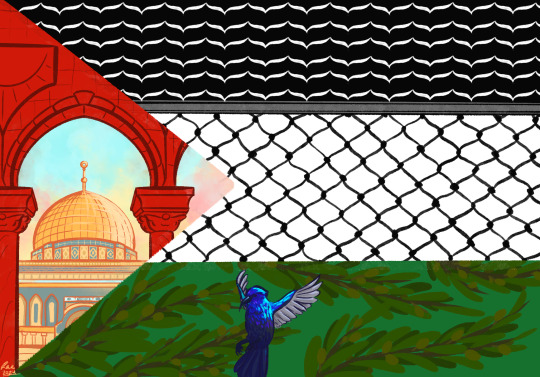
From the river to the sea!!
#palestine#free palestine#CEASFIRE NOW#stand with gaza#Gaza#west bank#i stand with palestine#from the river to the sea palestine will be free#palestinian sunbird#kuffiyeh#al aqsa mosque#olive trees#art for palestine
774 notes
·
View notes
Text
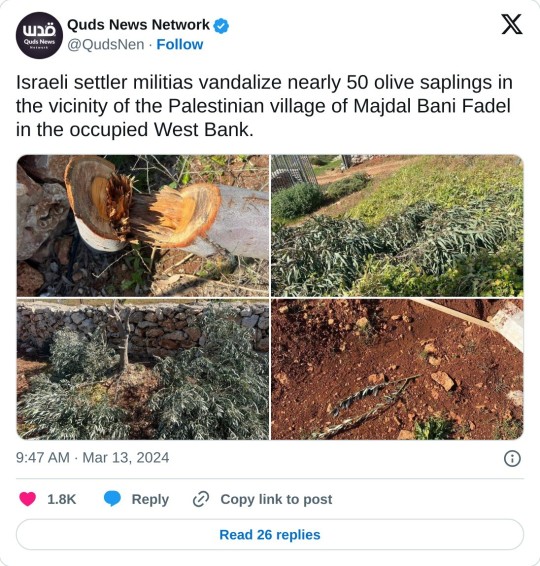
#yemen#jerusalem#tel aviv#current events#palestine#free palestine#gaza#free gaza#news on gaza#palestine news#news update#war news#war on gaza#olive trees#west bank#free west bank#settler colonialism
654 notes
·
View notes
Text
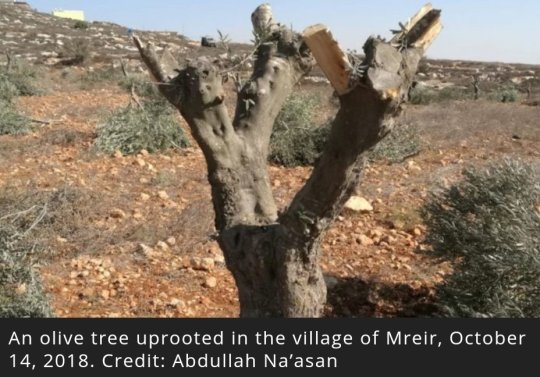

#free palestine#israel#palestine#news#native americans#usa#genocide#trees#olive trees#democrats#republicans#politics
515 notes
·
View notes
Text
Common Palestinian symbols
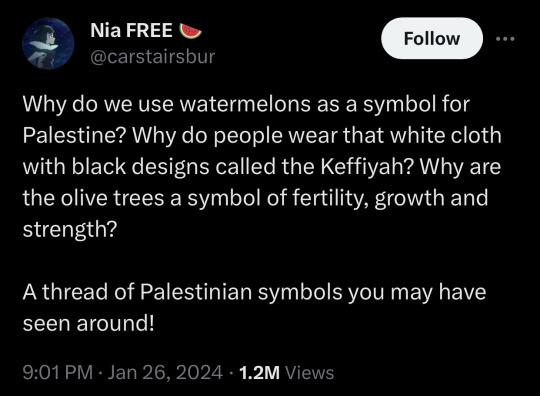
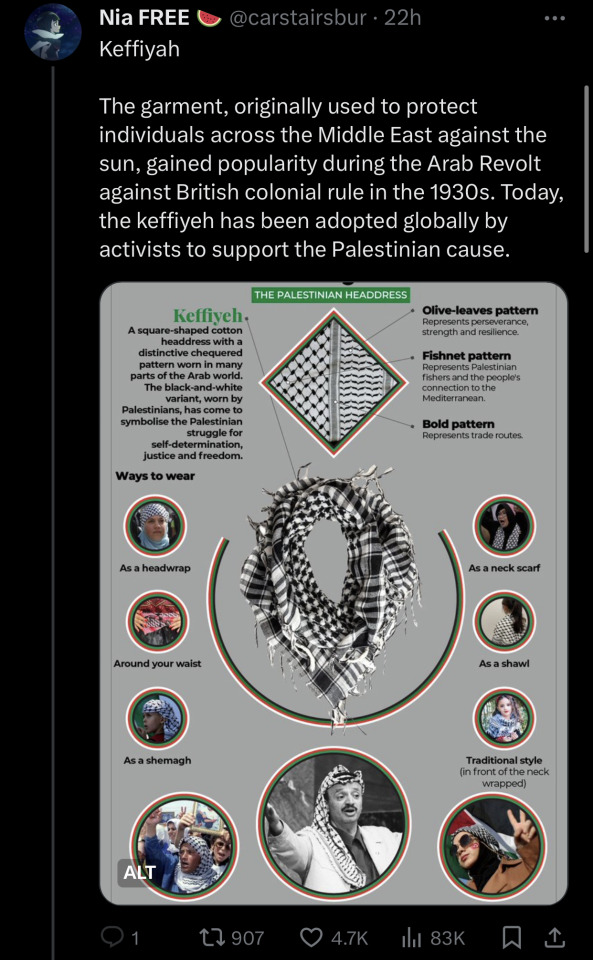

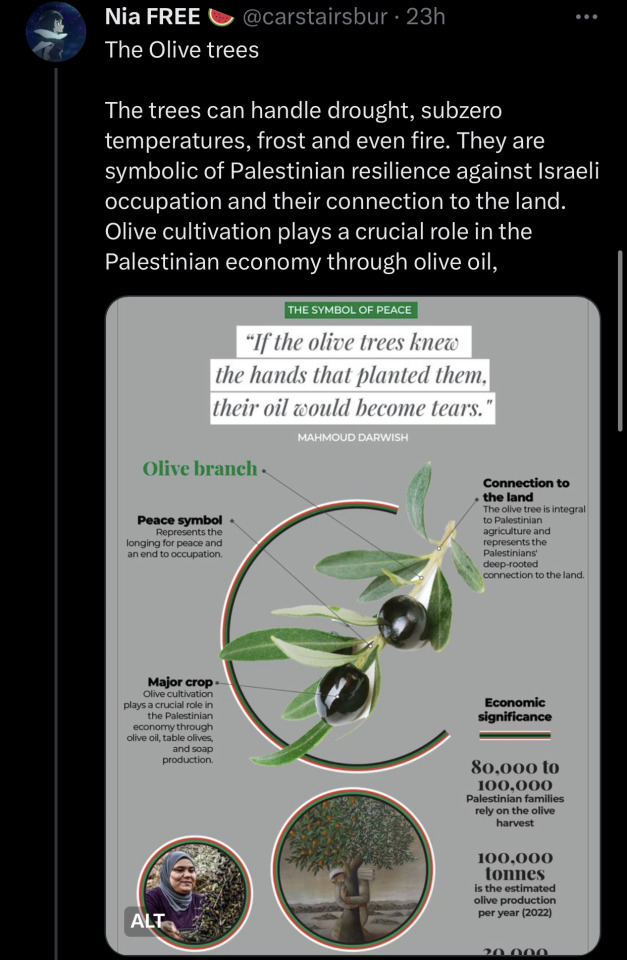


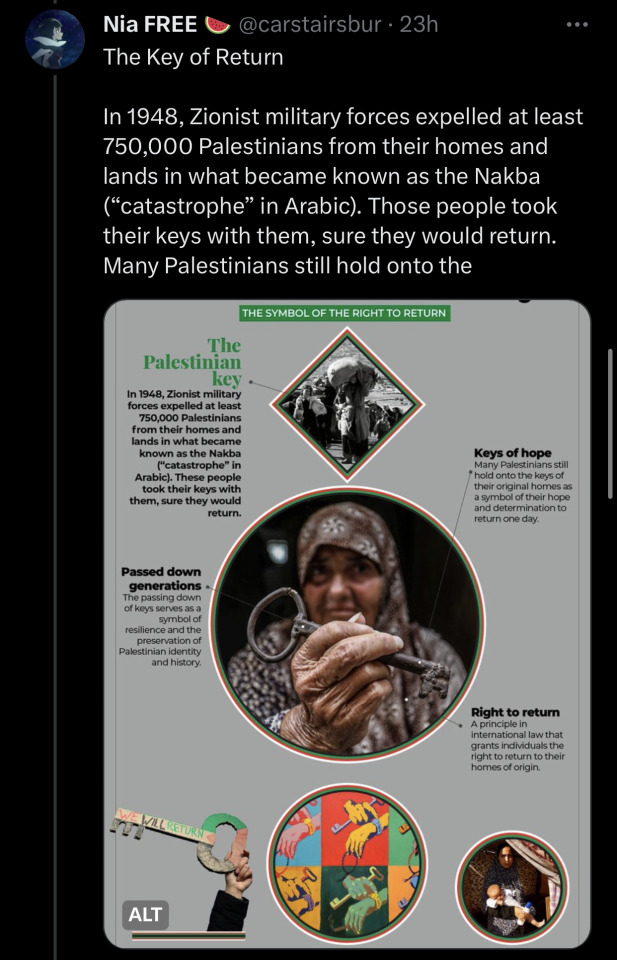
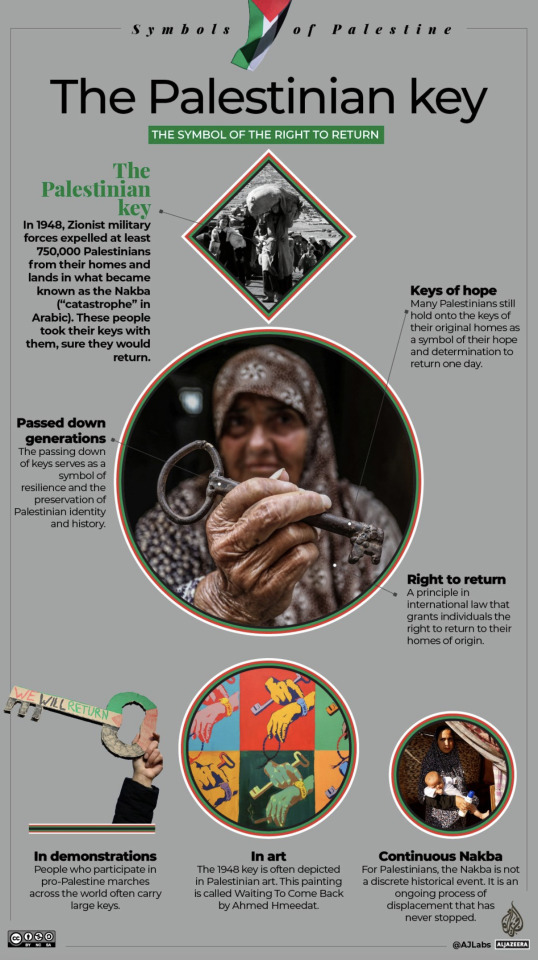

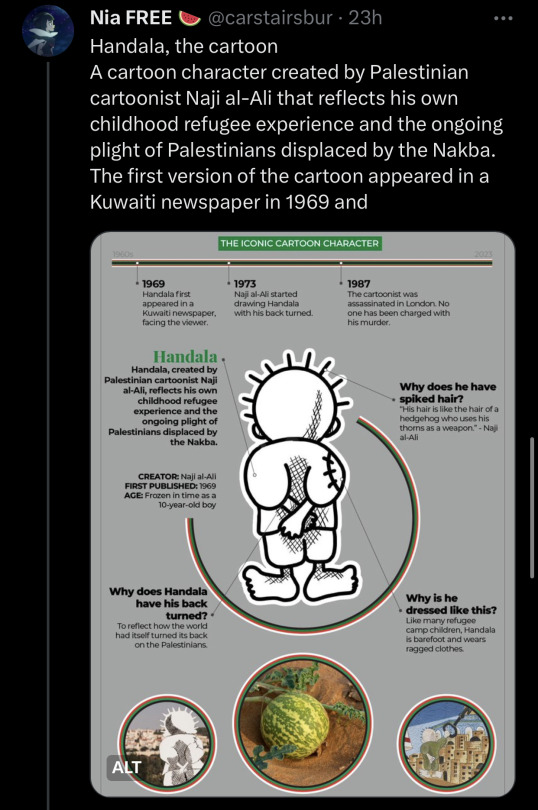

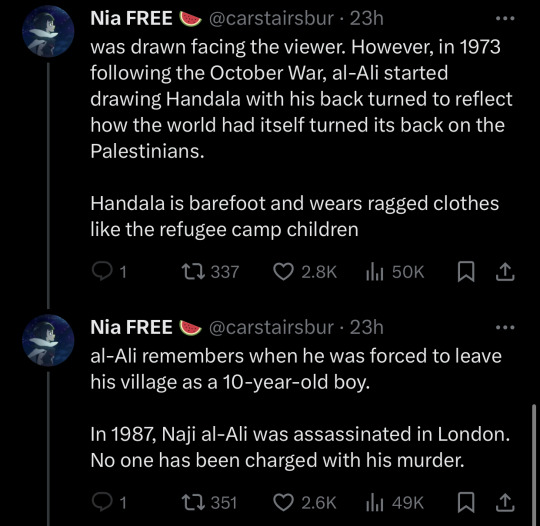
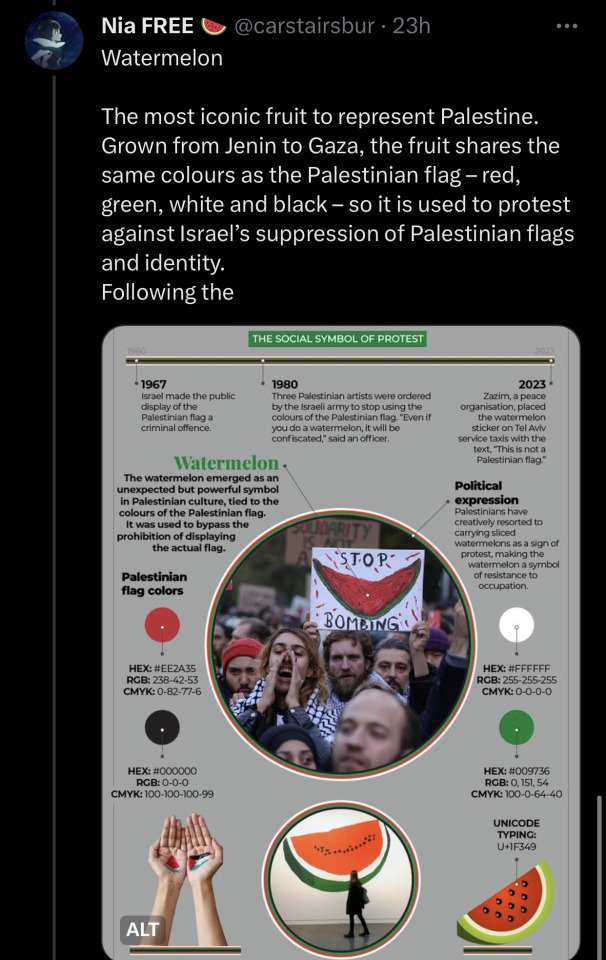
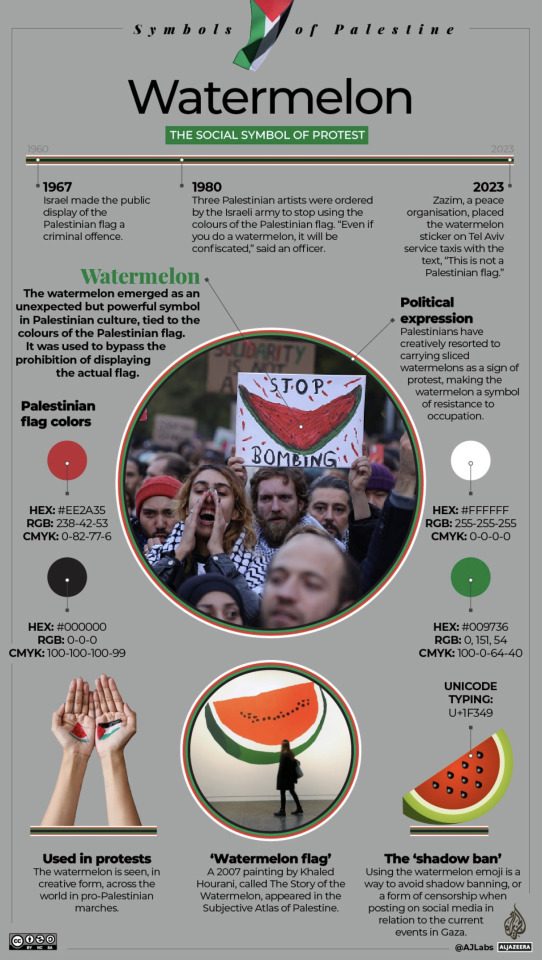
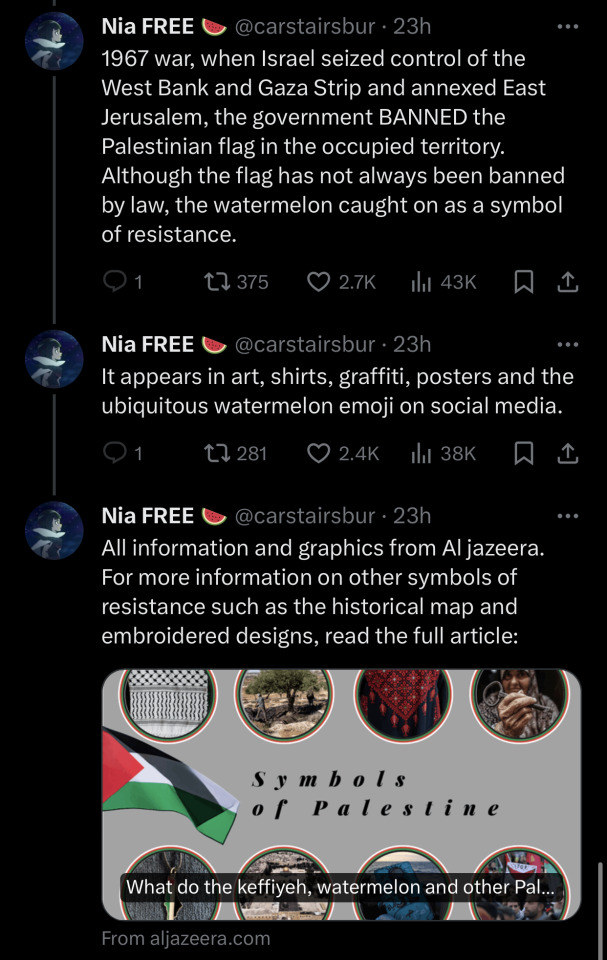
I got permission from @/carstairsbur to repost this thread
The image descriptions for the posters were written by @/carstairsbur and Mohammed Haddad, Konstantinos Antonopoulos and Marium Ali.
Original thread | Images only | Original Article (Source of the posters)
#ChuchaYucca.text#palestine#free palestine#free gaza#strike for palestine#strike for gaza#ceasefire#no business as usual#global strike#stop the genocide#global strike week#ceasefire now#keffiyeh#olive trees#The key of return#handala#watermelon#the olive branch#the Palestinian key
12K notes
·
View notes
Text



Badolato, Calabria, Italy
Follow us on Instagram, @calabria_mediterranea
#badolato#calabria#italy#italia#south italy#southern italy#mediterranean#mediterranean sea#sea#seascape#orange trees#orange tree#oranges#citrus#citrus fruit#italian#europe#landscape#italian landscape#landscapes#italian landscapes#nature#nature photography#olive trees#olive#olive tree#olive garden#olive farm
81 notes
·
View notes
Text



parga
© 2024 Yiannis Krikis
#parga#lensblr#lensculture#fine art photography#photographers on tumblr#landscape#epirus#olive trees#greece
66 notes
·
View notes
Text
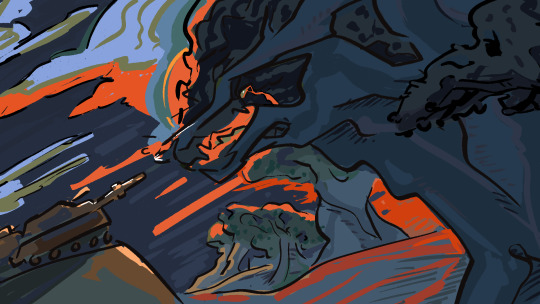
day 24: olive trees
striking 23-28th; i won't be focusing on werewolves, and i'll be drawing attention to palestinian symbols and imagery instead.
links to donate
call your reps
230 notes
·
View notes
Photo




La Sénia town and its surrounding landscape, including the Sénia river and one of the thousand-years-old olive trees. The area around the Sénia river in Terres de l’Ebre, Catalonia, has the highest concentration of thousand-years-old olive trees in the world, with at least 5,000 of them.
Photos by Turisme La Sénia and santy_gimeno on Instagram.
#la sénia#catalunya#fotografia#natura#olive trees#olive tree#catalonia#europe#historical#places#earth#travel#beautiful earth#flora#river#trees#mediterranean#old town#beautiful places#wanderlust#southern europe
125 notes
·
View notes
Text
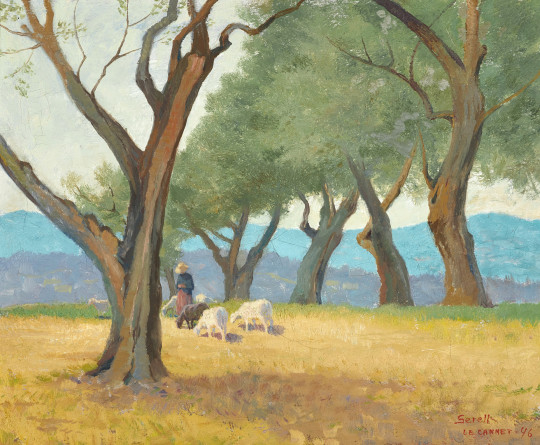
The olive grove on Mount Cannes - Greta Gerell, 1946.
Swedish, 1898 - 1982
Oil on cardboard panel , 60 x 74 cm.
172 notes
·
View notes